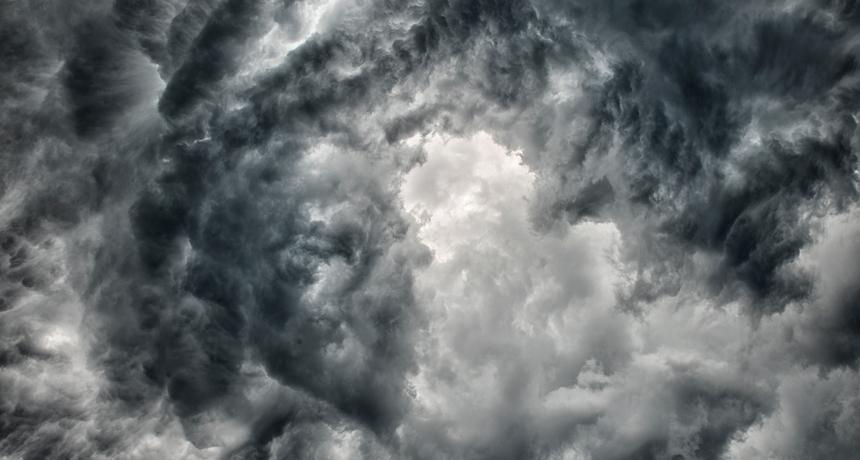It was one of the flashiest mysteries in the news about a decade ago — honeybee workers were vanishing fast for no clear reason. To this day, that puzzle has never been entirely solved, researchers acknowledge.
And maybe it never will be. Colony collapse disorder, or CCD, as the sudden mass honeybee losses were called, has faded in recent years as mysteriously as it began. It’s possible the disappearances could start up again, but meanwhile bees are facing other problems.
CCD probably peaked around 2007 and faded since, says Jeff Pettis, who during the heights of national curiosity was running the Beltsville, Md., honeybee lab for the U.S. Department of Agriculture’s research wing. And five years have passed since Dennis vanEngelsdorp, who studies bee health at the University of Maryland in College Park, has seen a “credible case” of colony collapse.
Beekeepers still report some cases, but Pettis and vanEngelsdorp aren’t convinced such cases really are colony collapse disorder, a term that now gets used for a slew of things that are bad for bees. To specialists, colony collapse is a specific phenomenon. An apparently healthy colony over the course of days or a few weeks loses much of its workforce, while eggs and larvae, and often the queen herself, remain alive. Also food stores in collapsing colonies don’t get raided by other bees as a failing colony’s treasures usually do.
“I think I know what happened,” says Pettis, now in Salisbury, Md., consulting on pollinator health. His proposed scenario for CCD, like those of some other veterans of the furor, is complex and doesn’t rest on a single exotic killer. But so far, no experiment has nailed the proof.
Looking back, Pettis realizes he had heard about what might have been early cases of CCD, described as colonies “just falling apart,” for several years before the phenomenon made headlines. Then in November 2006, Pennsylvania beekeeper David Hackenberg, as usual, sent his colonies to Florida for the winter. They arrived in fine shape. Soon after, however, many buzzing colonies had shrunk to stragglers. Yet there were no dire parasite infestations and no dead bee bodies in sight.
“It was, ‘OK, something weird just happened,’ ” remembers Jay Evans of the USDA’s honeybee lab in Beltsville. “It looked like a ‘flu,’ something that kind of swept through miraculously fast.”
No single menace, however, could be tightly linked to every sick colony, or only to sick colonies. Varroa mites, small hive beetles, Nosema fungi, deformed wing virus, unusual signs of pesticide exposure, for instance —screening techniques at the time just weren’t picking up a clear pattern in any of these bee bedevilments.
“People were following this story like crazy,” Pettis says. The bees’ unexplained plight prompted a national outbreak of amateur entomology. “There were people saying, ‘Why aren’t you doing more with jet contrails?’ There were ‘alien abductions.’ And the rapture — the bees were being called home.”
Entomologists were hounded by the press, not to mention leaned on by politicians and pursued by would-be entrepreneurs. “For me, what made it rewarding,” Pettis says, “was that people were learning about the value of pollination.”
A Columbia University researcher who had identified pathogens in mysterious human disease outbreaks took a crack at the problem. Ian Lipkin had never worked with bees, but he and his lab collaborated with entomologists and other bee specialists to search for any genetic signature of a pathogen appearing only in collapsing colonies. The approach of searching through mass samples, with their messy traces of gut microbes and random parasites, is now familiar as metagenomics. At the time, this way of searching for pathogens was groundbreaking, says collaborator Diana Cox-Foster, then at Penn State. The resulting paper, in Science , pointed to several viruses, especially the previously obscure Israeli Acute Paralysis Virus , or IAPV ( SN: 9/8/07, p. 147 ).
That emphasis on IAPV, which got a lot of attention at the time, hasn’t held up well. “It’s not 100 percent ruled out,” Evans says. But the explanation’s main problem is shared by other threats proposed as a single cause of CCD. After finding IAPV or another presumed single menace in sick bees in one place, he says, “you could go to other apiaries that were collapsing and not find it, or you could find it in healthier colonies.”
As an apiary inspector for Pennsylvania at the time, vanEngelsdorp monitored for signs of collapse in over 200 hives. “We tried to watch it happen but we couldn’t,” he says. None collapsed. Even finding the sickest bees in collapsing colonies was a challenge. Doomed bees presumably flew off in multiple directions, and birds or other scavengers usually found the bees before scientists could.
A gang of killers
Pettis now sees the disaster as a two-step process. Various stressors such as poor nutrition and pesticide exposure weakened bees so much that a virus, maybe IAPV, could quickly kill them in droves. Evans, too, sees various stressors mixing and matching. When pressed for his best guess, he says “all of the above.”
Cox-Foster has managed to re-create part of the process, the vanishing effect that marked the end for stressed bees. When she infected honeybee colonies in a greenhouse with a virus, the sick bees left the hive but were trapped by the greenhouse walls before dispersing too far to be found. (Of course, this experiment doesn’t demonstrate how colonies with no sign of a virus died.)
That tendency for sick bees to leave hives, vanEngelsdorp proposes, could have developed as a hygiene benefit. “Altruistic suicide,” as social-insect biologists call it. Flying away from the colony could minimize a sick bee’s tendency to pass disease to the rest of the family.
Today, hive losses remain high even with CCD waning or gone, according to national surveys by the Bee Informed Partnership, a nonprofit bee health collaboration. Beekeepers typically note that they either expect or can tolerate annual losses between 15 and 20 percent of their total number of colonies. Yet from April 2016 until March 2017, losses across the United States ran at about a third of hives. And that was a so-called good year, the second-lowest loss in the seven years with data on annual losses.
Classic CCD may not be much threat these days, but the “four p’s” — poor nutrition, pesticides, pathogens and parasites — are, says Cox-Foster, now at a USDA lab for pollinating insects in Logan, Utah. While honeybees aren’t likely to go extinct, these threats to the beekeeping industry boost pollination costs, which could affect food prices.
Coping with the four p’s may not fire the imaginations of armchair entomologists. But it’s more than enough of a challenge for the bees.

